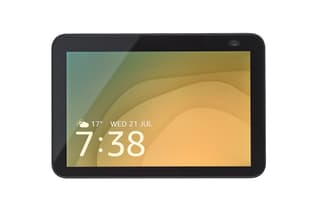WiFi and Bluetooth speakers
Compare WiFi and Bluetooth speaker reviews to find the best speaker for your lifestyle. We've tested 68 new and 35 discontinued models.
Portable speakers use Bluetooth to play sound from your device, while home speakers often use WiFi to stream directly. We’ve tested both, including budget options and pricier models. Here’s what to think about when buying.

Types of speakers
Home speakers
Home speakers plug into a wall socket as semi-permanent pieces of furniture.
Most have Bluetooth and the majority are smart speakers – with WiFi connectivity and a built-in virtual assistant, such as Amazon Alexa, Google Assistant, or Apple Siri, so you can control your speaker by voice.
Portable speakers
Portable speakers are powered by built-in rechargeable batteries, making them easy to take to another room, outside or away from home. Some also have the option to be plugged into mains power. Many are water resistant too.
All portable speakers have Bluetooth connectivity and some are also WiFi capable. Many of the WiFi models are smart speakers, able to be controlled by voice with the help of Amazon Alexa, Google Assistant and/or Apple Siri.
What’s the difference between Bluetooth and WiFi?
Bluetooth
Connecting via Bluetooth doesn’t require a connection to the internet. Just put the speaker into pairing mode and select its name in the Bluetooth settings on your device.
While manufacturers usually claim Bluetooth range is limited to about 10m, our testers found some with a range over 30m, even through doors and walls.
Bluetooth connections compress audio files for transfer, which can reduce audio quality, whereas WiFi does not.
WiFi
WiFi connected speakers can stream from services such as Spotify or Apple Music, usually via an app from the device manufacturer. Once connected, playing music is simple. For example, in Spotify, you select the speaker from a list and press play. You can also set up a queue and skip tracks.
Speaker features
Which features are important to consider when choosing a wireless speaker?
Battery run-time: If your speaker has a rechargeable battery, make sure it lasts long enough. In our testing, battery run-times ranged from 5 to 39 hours.
Water resistance: This is useful if you want to use your speaker outdoors. Look for an Ingress Protection (IP) rating of at least IPX4. Higher numbers offer more protection. For information, read our article about IP ratings.
Multi-room pairing: Many manufacturers make speakers that can be paired to others of the same brand so you can play your audio in multiple locations. The same single-channel sound will play from all speakers.
Stereo pairing: Stereo pairing is different from multi-room speaker pairing. Speakers of the same brand, paired in stereo, produce a multi-channel sound.
Near Field Communication (NFC): NFC lets you skip the pairing stage of connecting to a Bluetooth speaker. You can simply tap your device to your speaker and they’ll start communicating.
3.5mm AUX input: This is a port that allows a 3.5mm audio cable to be connected directly to the speaker. It’ll use less power than Bluetooth, but distance is limited by the length of the cable.
Charge devices via USB: Some speakers can also charge smaller devices, such as a phone, via USB. They have a specific type of USB port for this purpose.
Apple AirPlay 2: This is a wireless connection protocol that lets your speaker communicate easily with Apple devices.
Voice assistance: Many speakers now have a built-in virtual assistant, such as Amazon Alexa, Google Assistant, or Apple Siri, so you can control your speaker by voice.
Check our test results to see which models have the features and accessories you want.
People's Choice
Get access to Consumer to view this premium content
- Thousands of expert product/service reviews
- Personal support through our Consumer Rights Advice Line
- Premium articles and in-depth buying advice
- Add a Consumer magazine for even more exclusive content
Which speaker brands are most reliable?
We ask thousands of Consumer members about their products to find out which brands are most reliable and satisfying to own. The results are available to members and Digital Pass holders.
We've tested 103 WiFi and Bluetooth speakers.
Find the right one for you.
Amazon

Amazon

